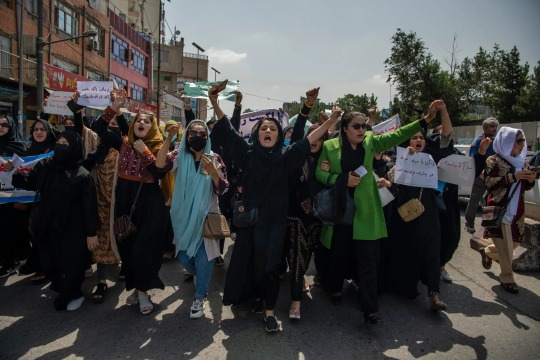#Kiana Hayeri
Explore tagged Tumblr posts
Text

A man washes a rug the day before Nowruz or the Persian New Year, near Kohna Deh village in Afghanistan. Known as khāne-takānī, this spring-cleaning ritual keeps evil away, so people can bring fresh, new energy into their new year.
Kiana Hayeri
2K notes
·
View notes
Text

Kaboul, Afghanistan, février 8, 2024. © Kiana Hayeri
4 notes
·
View notes
Text
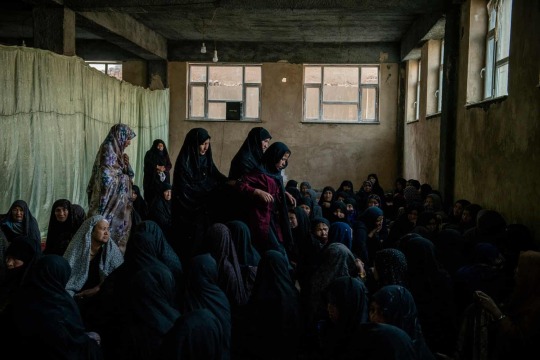
In May 2021, an explosion outside a high school in Kabul, Afghanistan, killed at least 70 people and wounded more than 150, many of them teenage girls leaving class. Visual storyteller Kiana Hayeri took this photograph in the basement of an unfinished mosque where neighbours and relatives of two of the victims have gathered to support their mothers through their grief
Photograph: Kiana Hayeri
1 note
·
View note
Text
2 notes
·
View notes
Text
Why Maids Keep Dying in Saudi Arabia
East African leaders and Saudi royals are among those profiting off a lucrative, deadly trade in domestic workers.
By Abdi Latif Dahir and Justin Scheck
Photographs by Kiana Hayeri
Abdi Latif Dahir, Justin Scheck and Kiana Hayeri spent months visiting cities and remote villages in Kenya and Uganda.
March 16, 2025
On any given day in Kenya, dozens, if not hundreds of women buzz around the Nairobi international airport’s departures area. They huddle for selfies in matching T-shirts, discussing how they’ll spend the money from their new jobs in Saudi Arabia.
Lured by company recruiters and encouraged by Kenya’s government, the women have reason for optimism. Spend two years in Saudi Arabia as a housekeeper or nanny, the pitch goes, and you can earn enough to build a house, educate your children and save for the future.
While the departure terminal hums with anticipation, the arrivals area is where hope meets grim reality. Hollow-cheeked women return, often ground down by unpaid wages, beatings, starvation and sexual assault. Some are broke. Others are in coffins.
At least 274 Kenyan workers, mostly women, have died in Saudi Arabia in the past five years — an extraordinary figure for a young work force doing jobs that, in most countries, are considered extremely safe. At least 55 Kenyan workers died last year, twice as many as the previous year...

0 notes
Text
East African Housekeepers Face Rape, Assault and Death in Saudi Arabia
Feith Shimila Murunga says her boss groped, beat and raped her. Mary Wanjiru Nyambura says she was thrown from a balcony. Winfridah Kwamboka never even made it back home. East African leaders and Saudi royals are among those profiting off a lucrative, deadly trade in domestic workers. By Abdi Latif Dahir and Justin Scheck Photographs by Kiana Hayeri Abdi Latif Dahir, Justin Scheck and Kiana…
0 notes
Text

Kiana Hayeri e Mélissa Cornet. No Woman’s Land (XIV Carmignac Photojournalism Award)
Le condizioni della donna in Afghanistan nel servizio fotogiornalistico delle due vincitrici della XIV edizione del premio di Fotogiornalismo Carmignac
1 note
·
View note
Text
Kiana Hayeri Iran
week 8
Kiana Hayeri is a photographer out of Iran who is currently capturing photos of the families, men and women who are currently facing the taliban war. Working for New York Times many of her images have been meation on the front page. Including self portraits of victims, soldiers and families affected. Her work touches on self-portraits and documentary style photography.
Many of her images are raw and emotional. Telling the story of where people are and what they have gone/going through. Focusing on people as they are, and how they are dealing with the war in their environment. She did have article for harper magazine back in 2016. https://www.theglobeandmail.com/news/world/mothers-day-single-mothers-afghanistan/article34969069/. Talking being a single mother of Afghanistan. Many of the mothers were sold at a young age and had to live their lives under much abuse till they could find the courage to run away with their kids. Another mother lost her husband to murder and others to sickness. The images of this article shows mothers spending time with their kids. Being in a natural environment. I like how the images gives you feel of comfort in a sense of 'your safe with your mum'. It's a feeling of happiness.
0 notes
Text
Spring Cleaning Has Ancient Origins. Here’s Why We Still Do It.
While the specific customs and practices may vary across cultures, the underlying themes of purification, preparation for new beginnings, and the celebration of spring’s arrival remain central to this enduring tradition.
— By Lola Méndez | March 19, 2024

A man washes a rug the day before Nowruz or the Persian New Year, near Kohna Deh village in Afghanistan. Known as khāne-takānī, this spring-cleaning ritual keeps evil away, so people can bring fresh, new energy into their new year. Photograph By Kiana Hayeri, National Geographic Image Collection
As the Northern Hemisphere ushers in the new season, a contagious urge to dust off cobwebs and toss out clutter emerges. Spring cleaning, a deep cleanse of one’s home, is a tradition ingrained in societies worldwide, with roots tracing back to ancient times.
It also holds symbolic significance. Viewed as a fresh start, the tradition symbolizes the transition from the dormant winter season to the vibrant growth of spring. By purging the home of accumulated debris and organizing its contents, individuals create a cleaner living environment and a sense of mental clarity and freshness.
“With each sweep of the broom and polish of the surface, we honor a tradition that transcends time, uniting us with generations past in a shared pursuit of renewal and rejuvenation,” says Danielle Patten, director of creative programs and collections at the Museum of the Home in London.
Benefits of Spring Cleaning
Human behavior is greatly influenced by the cycles of nature. In the colder months, we have less energy to spare for chores such as deep cleaning. We’re not being lazy; limited daylight triggers the hormone melatonin, which makes us sleepy.
“Melatonin causes us to feel less inclined to refresh our space. When the seasons start to shift, feelings of sluggishness reduce, and we regain energy and feel inspired to deep clean our living environments,” says author and psychotherapist Eloise Skinner. “When we refresh our environments, we can feel a sense of new beginning, or a renewed sense of drive and ambition.”
Studies have also shown that cleaning can be therapeutic, as seen by the new generation of “cleanfluencers” taking social media by storm. Millions of people watch them scour filthy homes and dole out cleaning hacks.
“When we’re cleaning, we often have to be present to the task at hand, and this can bring us into the present moment causing us to feel more aware, engaged and observant. The repetitive nature can also be soothing,” Skinner says.
Religious and Cultural Origins
One of the earliest known references to spring cleaning is found in the Jewish tradition of Passover, which is observed annually in March or April. People remove all traces of chametz or leavened bread, which is prohibited leading up to the holiday. Its removal symbolizes the haste with which the Israelites fled Egypt, unable to wait for their bread to rise before their journey to freedom.
Similarly, Catholics clean altars in churches on Maundy Thursday ahead of Good Friday, which is held annually in the spring in March or April. Nowruz, celebrated around the vernal equinox in March, involves the tradition called khāne-takānī or “shaking down the house.” People wash clothes, blankets, and textiles in preparation for this approximately 3,000-year-old holiday—which can be traced back to Zoroastrianism, one of the world’s first monotheistic religions.
Before the Lunar New Year, it’s common to cleanse the home of bad luck and misfortune in China. Known as “sweeping the dust,” cleaning makes way for the new year’s good luck and prosperity, says Patten. Cleaning must be done before the holiday, typically in January or February, since sweeping after the festivities is seen as removing good luck. In Thailand, during Songkran in April, it’s customary to deep clean homes, schools, and public spaces to purify them ahead of the Thai New Year. People toss water at each other in the streets to wash away the previous year’s bad luck and over statues of Buddha to ensure luck for the year to come.
While the concept of spring cleaning predates modern technology, advancements such as electricity and household appliances have influenced its practice. For example, before electric lights, people relied on fire from burning coal, oil, and wood to light and heat homes, which would leave behind a substantial amount of soot. Windows were kept securely closed to prevent a deadly draft from entering.
Come spring, it was pragmatic to open the windows to air out stuffy homes, remove grime, and repair any damages that occurred during the winter months. Inventions such as vacuum cleaners, washing machines, and cleaning agents have made the process more efficient and convenient, allowing for deeper and more thorough cleaning of living spaces.
1 note
·
View note
Text



Afghanistan
Kiana Hayeri
101 notes
·
View notes
Text
⏺ The Everyday Projects 2023 Grant
Deadline 08.05.2023 :: Anywhere
The Everyday Projects is awarding two grants to photographers for long-term projects in their own community. The selected applicants will receive $6,000 each and mentorship from Kiana Hayeri and Jennifer Samuel.
Priority will be given to photographers who have contributed to The Everyday Projects or the African Photojournalism Database and whose projects align with the organisation's mission of promoting human dignity and defying stereotypical imagery.
Application details here.
0 notes
Photo
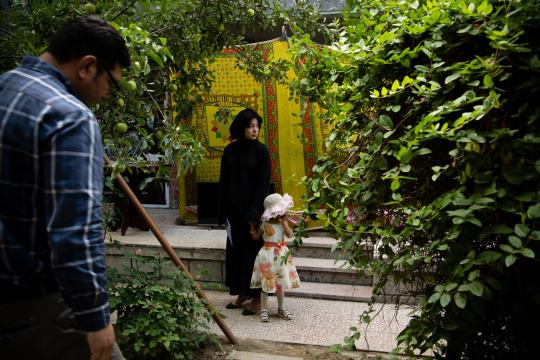
What Will Become of Afghanistan’s Post-9/11 Generation?
Kiana Hayeri for The New York Times
3 notes
·
View notes
Photo




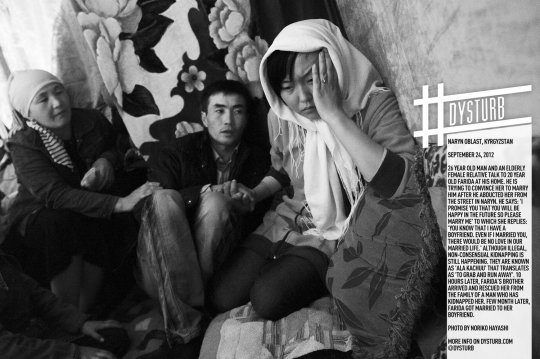
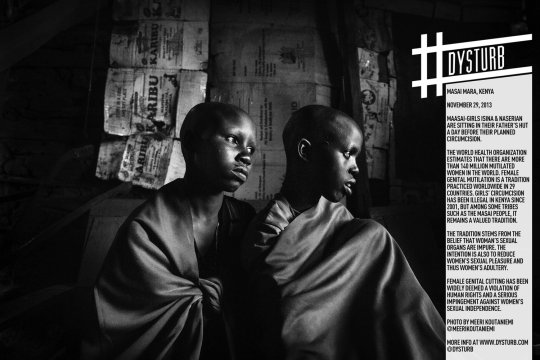



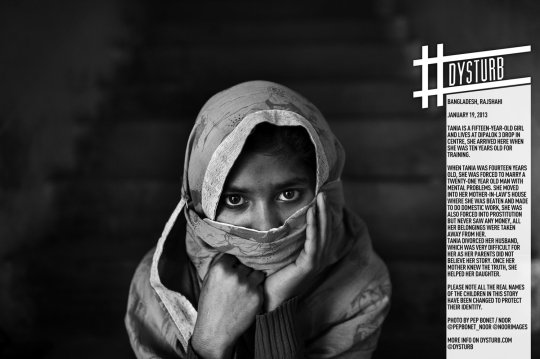
Dysturb #womenmatter
Photojournalism is a universal language with the power to demolish stereotypes, trigger discussions and alert consciences.
In 2014 Dysturb began pasting mural-sized guerrilla blow ups in public places: city walls, skate parks, and school hallways. In stark black and white, they make billboard sized prints of news images from photojournalists around the world, on a scale usually only seen in color commercial advertisements, to bring crucial subjects - like climate change, women’s issues, refugee crisis - and place them directly in front of people’s eyes.
#bnw#street#dysturb#womenmatter#andrea bruce#glenna gordon#poulomi basu#ilona szwarc#noriko hayashi#meeri koutaniemi#leonora baumann#krisanne johnson#kiana hayeri#pep bonet#headscarf
5 notes
·
View notes
Photo



Murals in Douglas, Arizona, part of Artists Against an #Infodemic, a collaboration between Dysturb, CatchLight, The Everyday Projects and artists around the world to encourage people to follow WHO guidelines.
Artists in the above images, top to bottom-
Photo on the right (check out the link to the project for the complete image) by Kiana Hayeri @kianahayeri
Photo on left by Antonio Pellicano (@antoniopellicanonews) / Work on the right by Shaun Myles (@smylus)
Photo on the left by Rubén Salgado Esudero @rubensalgadoescudero /Work on the right by Lady JDay (@ladyjday)
#dysturb#CatchLight#The Everyday Projects#Kiana Hayeri#Shaun Myles#Ruben Salgado Escudero#Lady JDay#artists against an infodemic#street art#murals#street art arizona#douglas arizona#arizona street art#pandemic
0 notes
